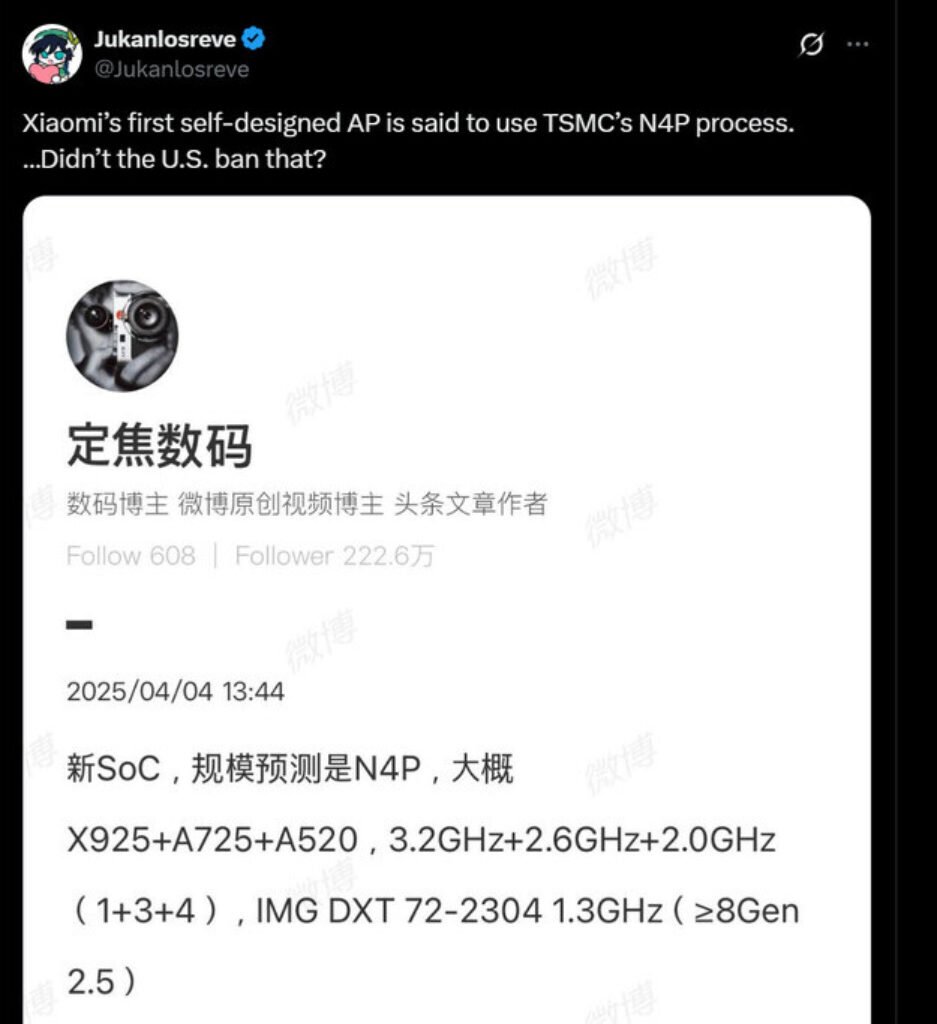Xiaomi is reportedly moving forward with its first proprietary Xiaomi’s mobile chipset, according to multiple industry sources and recent leaks. The Chinese smartphone maker is said to have reached the tape-out stage for its custom SoC as of October 2024, with the chip expected to enter production sometime in 2025. Unlike many domestic competitors, Xiaomi appears to have secured access to a more advanced manufacturing process, selecting Taiwan Semiconductor Manufacturing Company’s (TSMC) 4nm N4P node—a surprising move given the current geopolitical landscape and export control policies.
Reports from earlier in 2024 had suggested that Xiaomi was exploring a 3nm chip design, with an internal target of bringing the processor to market in 2025. However, more recent updates indicate that the initial release will use the slightly older but still efficient N4P process. According to a report from Wccftech, the upcoming silicon will not include custom CPU cores, unlike recent Qualcomm designs that have begun shifting to semi-custom or fully custom architectures. Instead, Xiaomi’s SoC will rely on standard ARM designs, including Cortex-X925, Cortex-A725, and Cortex-A520 cores.


A new leak from a Weibo post by Fixed Focus Digital, a source with a mixed track record, claims that the chipset will also feature an integrated GPU developed by Imagination Technologies. The GPU, reportedly the IMG DXT 72-2304, is said to outperform Qualcomm’s Adreno 740 in certain workloads. The Adreno 740 was introduced with the Snapdragon 8 Gen 2 in late 2022 and has served as a reference point for flagship mobile graphics performance since then.
While Xiaomi has not officially confirmed any specifications or release timeline for its custom chip, several analysts and industry observers have commented on the possibility of a late 2025 launch. Given the projected performance levels, many expect this first-generation chip to offer capabilities on par with Qualcomm’s original Snapdragon 8 series, which debuted in late 2021.
Skepticism remains around some of the claims being circulated. For instance, Jukanlosreve, a social media personality who follows semiconductor leaks, expressed doubts about Xiaomi using the N4P process. Responding to the speculation, tech commentator Mochamad Farido Fanani remarked that some sources are known to make unreliable predictions, noting that Fixed Focus Digital “always guesses blindly.”
Despite the mixed signals, Xiaomi’s move toward in-house chipset development follows a broader trend among major smartphone manufacturers. Apple and Google have already established custom silicon programs to optimize performance and software integration. For Xiaomi, achieving similar independence could offer long-term benefits, especially in areas like AI acceleration, imaging pipelines, and power efficiency—areas where off-the-shelf chipsets may not fully align with company goals.
As 2025 approaches, more details are likely to emerge about Xiaomi’s chip ambitions. Until then, the company appears to be keeping its plans under wraps, possibly waiting for a strategic moment to reveal its next steps in mobile hardware development.
Sources: Fixed Focus Digital on Weibo CN, Jukanlosreve Tweet, Wccftech, TrendForce (from 2024), Wccftech (from 2024), Gizmo China, Mochamad Farido Fanani Tweet







